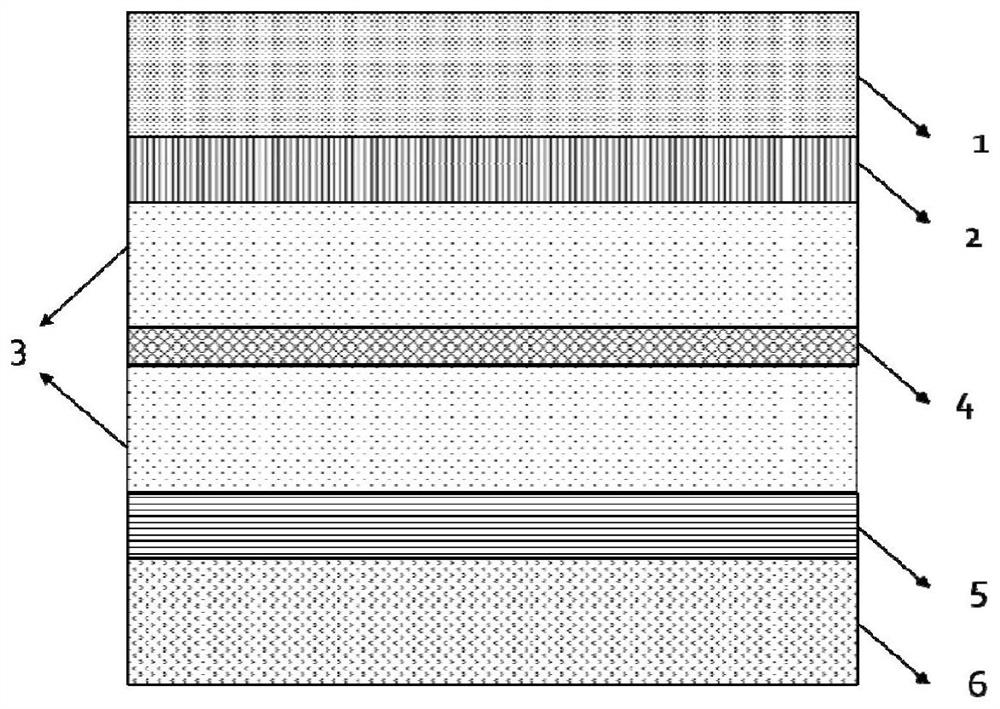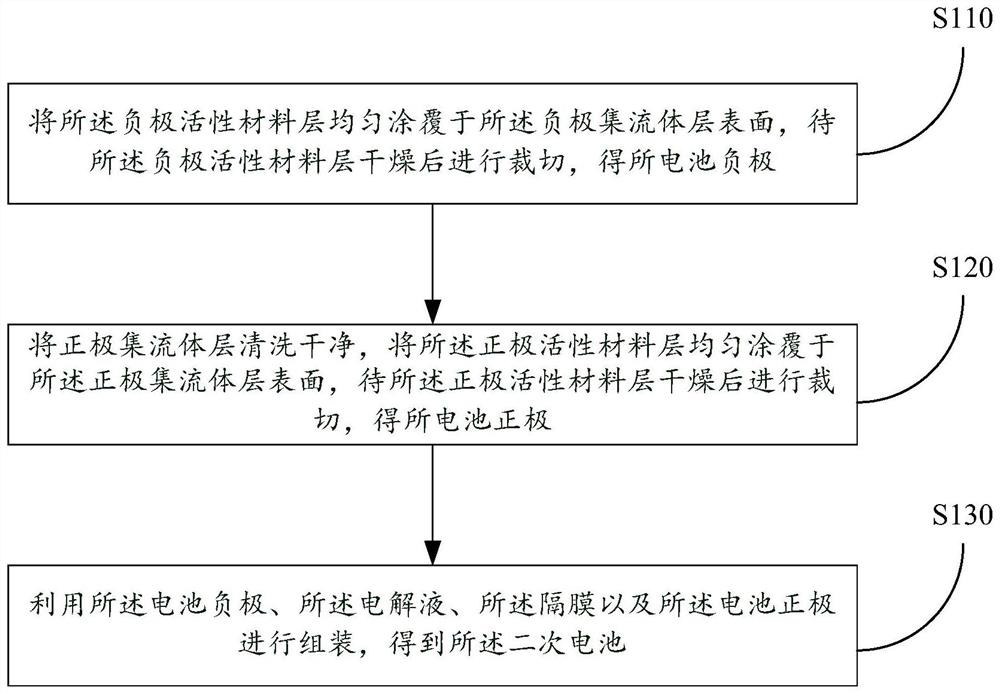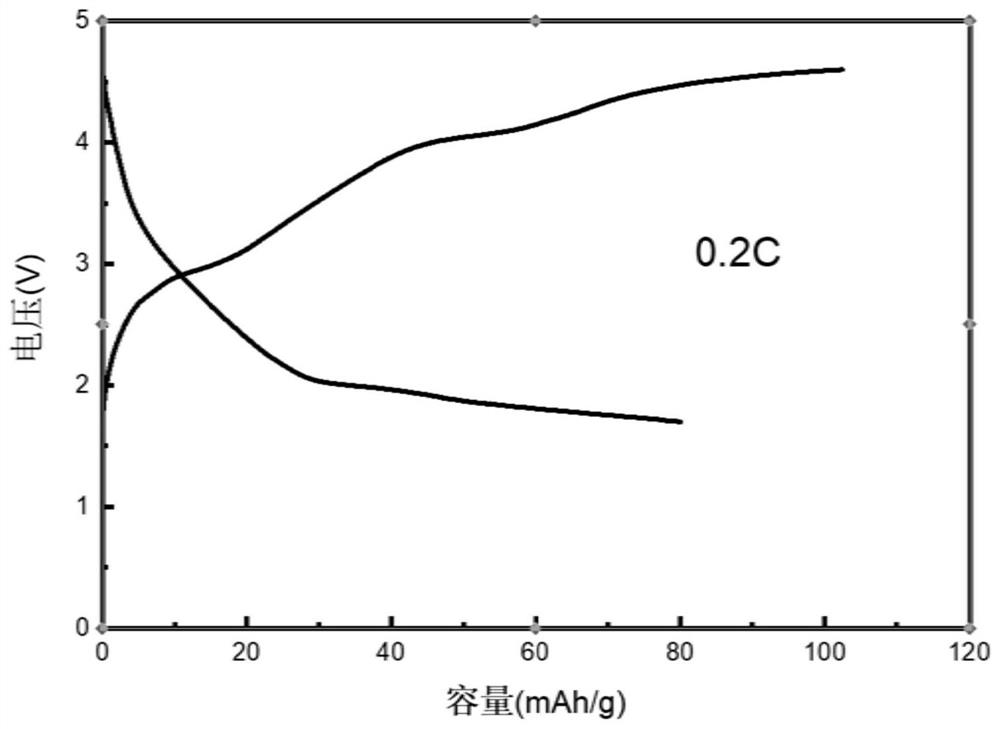Novel secondary battery and preparation method thereof
A secondary battery, a new type of technology, applied in secondary batteries, electrolyte battery manufacturing, battery electrodes and other directions, can solve the problems of complex preparation process, limited types of positive electrode materials, and unsatisfactory electrochemical performance of sodium ion batteries.
- Summary
- Abstract
- Description
- Claims
- Application Information
AI Technical Summary
Problems solved by technology
Method used
Image
Examples
Embodiment 1
[0063] Embodiment 1: Based on Na 2 co 2 (C 2 o 4 ) 3 2H 2 Sodium-ion half-cell with O positive electrode
[0064] Preparation of the negative electrode of the battery: roll the sodium metal on the aluminum foil (ie, the negative current collector) to form a foil, and cut the obtained sodium-aluminum composite foil into a disc with a diameter of 12mm, which is used as the negative electrode of the battery.
[0065] Preparation of the separator: the glass fiber film was cut into discs with a diameter of 16 mm and used as a separator for later use.
[0066] Preparation of electrolyte solution: Weigh 0.6122g of sodium perchlorate and add it to 10ml of propylene carbonate solvent, stir until sodium perchlorate is completely dissolved, then add 3% fluoroethylene carbonate as an additive, stir well and use as Electrolyte spare.
[0067] Preparation of battery positive electrode: 0.8g Na 2 co 2 (C 2 o 4 ) 3 2H 2 O crystal powder, 0.1g conductive agent carbon black, 0.1g b...
Embodiment 2-25
[0071] Embodiment 2-25: Based on Na 2 m 2 (C 2 o 4 ) 3 2H 2 Na-ion full battery with O(M=Co,Ni,Mn) cathode
[0072] Prepare the negative electrode of the battery: add the negative electrode active material, the negative electrode conductive agent, and the negative electrode binder according to a certain ratio (see Table 1) into 2ml of nitrogen methyl pyrrolidone solution, grind sufficiently to obtain a uniform slurry; then coat the slurry evenly on the surface of the negative electrode collector and vacuum-dried. The electrode sheets obtained by drying were cut into discs with a diameter of 10 mm, which were compacted and used as battery negative electrodes for future use.
[0073] Preparation of the separator: the glass fiber film was cut into discs with a diameter of 16 mm and used as a separator for later use.
[0074] Preparation of electrolyte: Weigh a certain amount of electrolyte salt and add it to a certain amount of organic solvent, stir until the electrolyte s...
PUM
| Property | Measurement | Unit |
|---|---|---|
| Diameter | aaaaa | aaaaa |
| Discharge capacity | aaaaa | aaaaa |
Abstract
Description
Claims
Application Information
 Login to View More
Login to View More - R&D
- Intellectual Property
- Life Sciences
- Materials
- Tech Scout
- Unparalleled Data Quality
- Higher Quality Content
- 60% Fewer Hallucinations
Browse by: Latest US Patents, China's latest patents, Technical Efficacy Thesaurus, Application Domain, Technology Topic, Popular Technical Reports.
© 2025 PatSnap. All rights reserved.Legal|Privacy policy|Modern Slavery Act Transparency Statement|Sitemap|About US| Contact US: help@patsnap.com



